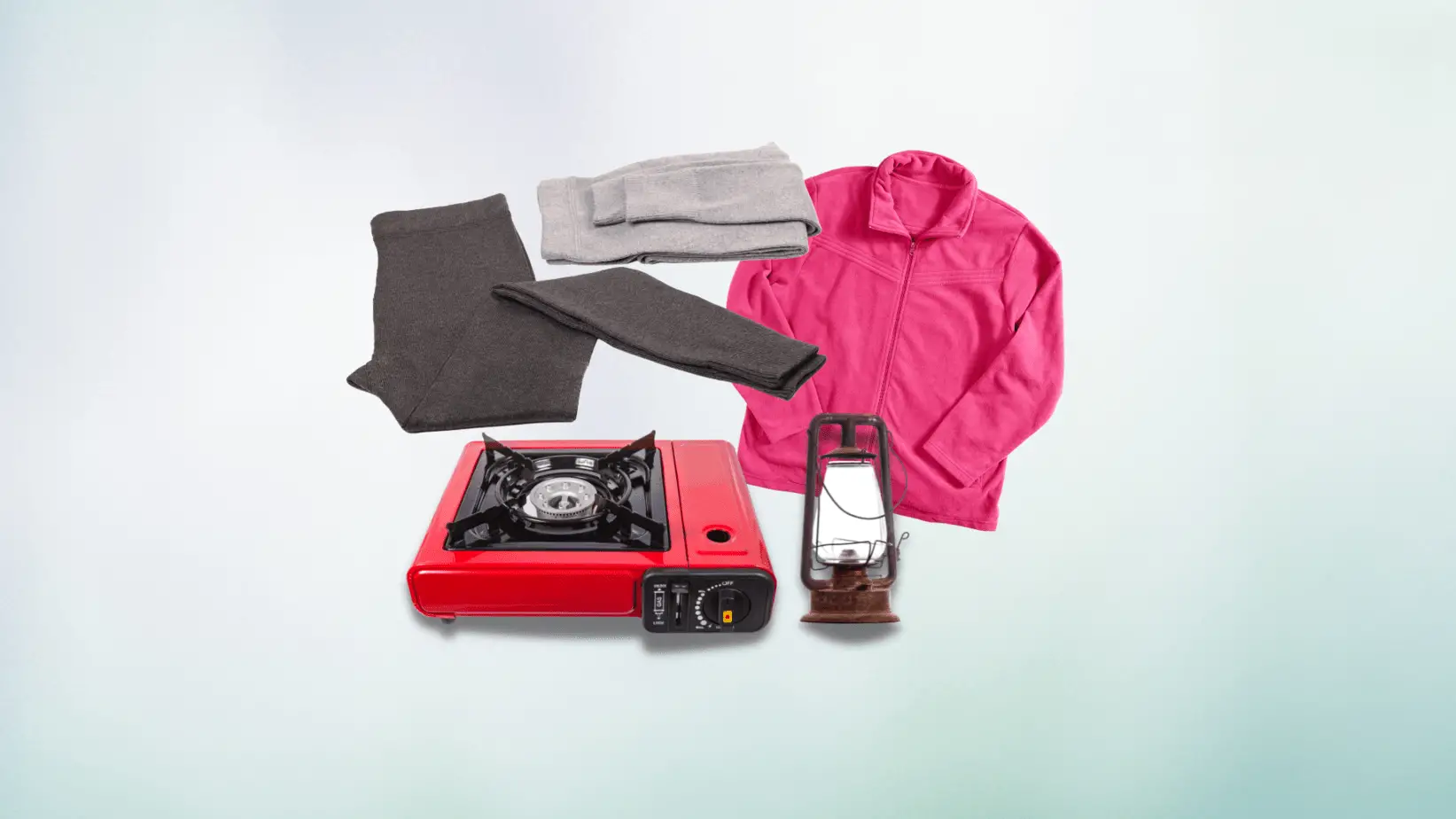At the core, short-term and long-term camping are largely the same. Both involve sleeping in unconventional shelters, away from home, for the purpose of experiencing nature (or just to get away). Most obvious is that they both have a beginning and an end.
It’s the space between the beginning and the end that makes them different.
Short-term camping, or even glamping, is just that- short. It’s easier for us to enjoy the challenges that camping presents because we can almost see the end before the experience begins.
Long-term camping moves the ending just out of sight. It tests our willingness and ability to confront (and enjoy) those challenges after the initial excitement wears off.
Even if it’s not for you, everyone should try long-term camping at least once. You’ll learn a lot about yourself, and (in my experience) have a lot of fun in the process.
In this guide, I’ll discuss some tips for long-term camping that have been helpful for me, and provide a comprehensive list of essential items that will keep you happy and comfortable while you camp.
Table of Contents
Long-Term Camping Tips
Campground or Primitive?
Before you start buying new gear and loading up the car, you’ll need to decide where to camp.
There are two types of campsites: those within an established campground, and primitive campsites (also known as dispersed campsites). The type of camping experience that you choose will determine how you prepare and what gear you’ll need.
Established campgrounds normally charge a fee and offer basic services such as trash receptacles, clean water, and restrooms. Whereas primitive campsites offer no services and are usually free.
Primitive camping areas are commonly found on public lands such as National Forests, Bureau of Land Management (BLM) land and state land. They are usually designated on Off-Highway Vehicle (OHV) maps (like this one in the Custer Gallatin National Forest).
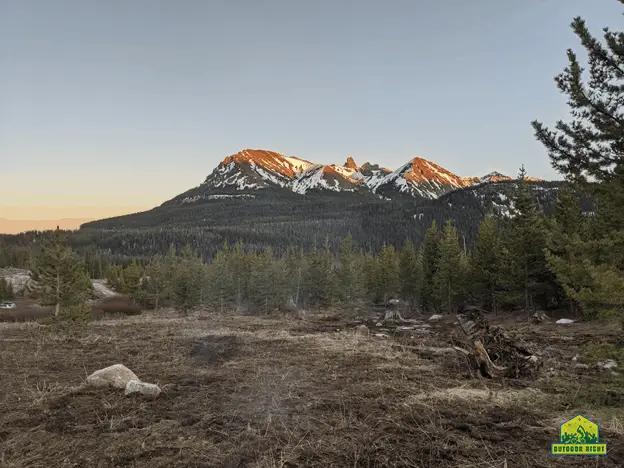
Previously used campsites may or may not be identifiable from a road. In many cases, campsites are nothing more than a stone fire ring and some trampled grass, or a clearing in the forest.
When compared to an established campground, primitive camping offers a remote experience, somewhere between car camping and backpacking.
Most public land and established campgrounds have at least some restrictions. These often include rules about where you can camp, how long you can stay, the number of vehicles allowed, and campfires. For example, in the Custer Gallatin National Forest where I live, camping is limited to 16 consecutive days per campground or location.
It’s always better to end a trip on your own terms, so do your research ahead of time. When in doubt, contact the proper local agency (such as the local Forest Service or BLM office) to ensure a smooth trip.
Water
Humans need a lot of water. Roughly one gallon per day just to stay hydrated, and even more when you factor in dishes and cooking.
If you’re camping in an established campground with access to fresh water, you’re off the hook. But if you’re camping in a primitive area, you’ll need to source your water from a lake, river, or stream. With this in mind, it’s important to select a campsite that’s relatively close to water.
Unless otherwise posted, most public lands prohibit camping within 200 feet of a water source (such as a lake, river, or stream), so use this distance as your baseline. This buffer zone prevents waste (human or other) from contaminating the water source, and protects against erosion from human traffic. This also helps prevent conflicts between humans and wildlife.
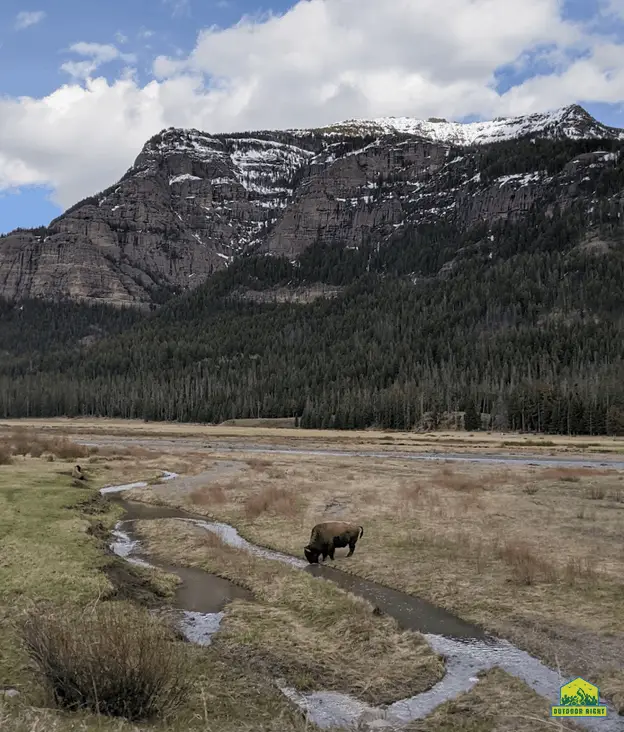
Whenever possible, I try to camp within 200-300 feet of a water source. That said, I’m usually willing to trade a longer walk for a five-star campsite, and I encourage you to do the same!
Campsite Layout
The layout of your campsite is just as important as where it’s located. In general, most campsites have six components:
- Common Area
- Tents
- Kitchen
- Cleaning Area
- Shelter
- “Toilet”
The layout of a campsite can take on many different forms, but here are a few tips:
- Your kitchen, cleaning area and food should be kept at least 100 feet from tents. The goal is to keep attractants (and critters) away from your living area.
- Your “toilet” should be at least 200 feet from your camp and water.
- Tents can turn into parachutes during a storm. Situate your tent so the door is on the opposite side of the prevailing wind.
- Think about the location of your tent. Where will water go if it rains? Are there any dead trees that could fall if the wind kicks up?
Check out this video for more information about setting up your campsite.
Must Have Items for Long-Term Camping
Tent
If you’re long-term camping, you probably aren’t tearing down your tent every day. This means that some of the usual concerns like weight and setup time can move down in priority. Instead, a greater emphasis can be placed on durability, comfort, and resistance to weather.
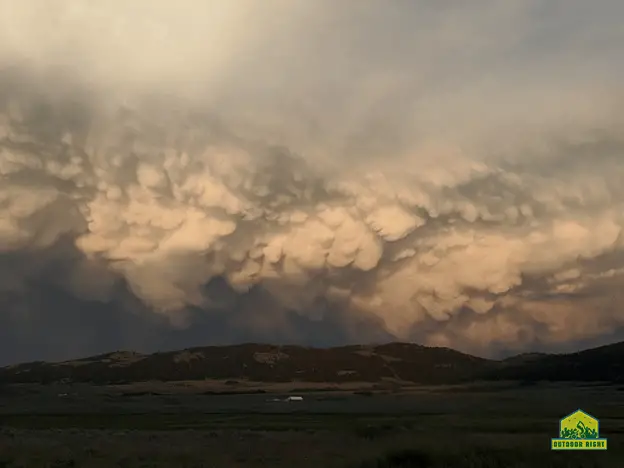
Starting with durability, you need a tent that can stand up to the elements for an extended period of time. Especially if it’s a hippie tent. Canvas tents (from brands like Whiteduck and Teton Sports) have gained popularity for their durability and spacious designs. However, what you gain in durability is sometimes lost in breathability.
- STAY DRY AND KEEP COOL: Waterproof canvas is breathable for the best all-season...
- HOME AWAY FROM HOME: Roomy tent has extra-high ceilings; Large awning protects...
- EXTRA WIDE DOORS: First of its kind, oversized doors allow you to move your...
- QUICKER, EASIER SET UP: Family tent has a quick and easy setup; Push down the...
- TETON SPORTS PROMISE: Reach out to our AMAZING product support team if you have...
Canvas fabric has a reputation for trapping heat, so a polyester tent might be a better option if you’ll be camping in warmer climates. Polyester is used in the majority of tents on the market. It’s light and breathable, but can be prone to tears, punctures, and weathering.
I’ve used both canvas and polyester tents in a wide range of conditions. While I’d think twice before backpacking with a canvas tent, it’s easily my first choice for long-term camping. The strength, durability, and longevity of canvas is hard to beat.
Sleeping Surface
Good sleep is critical for good camping, and over the last decade sleep technology has come a long way. The time tested classics like foam pads and hammocks are still available and preferred by many. But for those looking for a little more comfort, there’s a wide range of ergonomic cots and camp mattresses to choose from.
In general, sleeping pads and hammocks are the most affordable, followed by camping mattresses and cots.
While you won’t be taking a cot backpacking, long-term camping is a different game and comfort should be your top priority. Spending a bit more for a high quality cot or camp mattress is an investment that you won’t regret. While I don’t own one (yet), I’ve tried the REI Kingdom Cot and it’s pretty sweet.
Sleeping Bag / Bedding
Sleeping bags are generally categorized by activity/use, temperature rating, insulation type, and gender.
For example, a sleeping bag designed for a female mountaineer will be light, compact, super warm, and body conforming. Whereas a sleeping bag designed for a male car-camper will be big and bulky with plenty of room to stretch out.
Select a sleeping bag with a temperature rating that’s slightly colder than the lowest temperature you expect to camp in. For example, if the lowest overnight temperature will be +40 degrees, look for a sleeping bag rated to +30 degrees or +35 degrees.
Clothing
There are four essential types of clothing that I bring camping:
- Base Layers
Also known as long-underwear or baseliners, synthetic base layers pull moisture away from your body to keep you dry. They are normally designed for a specific season and/or climate, and will either keep you cool, warm, or both (even when wet).
- Insulating Layer
Regardless of climate, it’s important to pack at least one insulating layer. Your insulating layer should be breathable and easy to put on or take off. Depending on the season and climate, this can be anything from a fleece pullover to a down vest.
Personally, I use a hooded polyester sweater. It’s super breathable and keeps me warm and comfortable on chilly mornings. If you’re lucky enough to be bald like me, keep your head warm and get one with a hood.
- Lightweight men's 1/2 zip pullover jacket is a great layering option for...
- 100-weight sweater fleece provides warmth and comfort
- Flatlock seams offer smooth, chafe-free movement
- Driclime-lined collar wicks moisture and prevents scratching
- Zippered chest pocket provides convenient storage
- Outer Layer
Your outer layer is the first line of defense against the elements. Depending on the season, this can be anything from a rain jacket to a down coat. Regardless of which outer layer you choose, it should be fully waterproof and protect against the wind.
- Socks & Underwear
While long-term camping, you’ll be on your feet for a good portion of the day. It’s critical that you take care of your feet.
When I go camping for extended periods, I bring one pair of socks for each day I’m gone (up to seven pairs). The same goes for boxers/underwear.
In an environment where it’s hard to stay clean, a fresh pair of socks or underwear can be just what you need to start the day right.
As a final note about camp clothing: use synthetic options whenever possible. Cotton loves to hold water, whereas synthetic fibers shed water and dry quickly.
You can still bring your flannel, but when it comes to active camp clothing: cotton is the enemy.
Cooler / Food Container
If you plan to bring perishable foods and cold drinks, you’ll need to bring a cooler. The number one trait to look for when selecting a cooler is ice retention. There are several varieties on the market, but Yeti and RTIC are the go-to names. While expensive, full-sized Yeti and RTIC coolers can hold ice for up to 10 days!
- The YETI Tundra 65 is just as adept at keeping your catches cold in the field as...
- Ice stays ice thanks to up to 3 inches of PermaFrost Insulation and an extra...
- The Rotomolded Construction makes the Tundra armored to the core and virtually...
- All Tundra coolers feature T-Rex Lid Latches constructed of heavy-duty rubber so...
- The Tundra 65 dimensions are 30 1/2 in long x 17 1/2 in wide x 16 in high with...
Gas Stove
The type of gas stove you use will largely depend on what you like to cook when camping. For some, preparing elaborate camping meals is the entire point of camping. In this case, you’ll want to look for a stove with at least two, medium sized burners.
Think about where you’ll be cooking. Some variations (like the Camp Chef Explorer) come with legs, and others don’t. If you’re on a budget, the Coleman Classic is a reliable, time-tested stove that’s been around for decades.
- Ultimate Camping Stove: This propane camping stove has two 30,000 BTU burners so...
- Portable Camping Stove: The Camp Chef Explorer has detachable legs and a...
- Versatile Camping Cooking Stove: This camp stove fits Camp Chef 14”...
- High-Quality Cooking Stove: The Camp Chef Explorer camping stove can be used...
- About Us: Camp Chef is a passionate team committed to bringing five-star flavor...
- Cooking power: Up to 20,000 total BTUs. Fits a 12-inch and 10-inch pan at the...
- 2 adjustable burners: For precise temperature control
- Wind-blocking panels: Shield burners from wind
- Pressure regulator: Pressure-control technology for consistent performance, even...
- Runtime: Up to 1 hour on high on one 16.4 oz. Propane cylinder (sold separately)
Keep in mind that long-term camping takes a toll on your energy. If you’re cooking traditionally, it can easily take over an hour to prep, cook and eat- and that’s before you’ve cleaned up.
Personally, I’m a minimalist when it comes to camp meals. While they can be expensive, you just can’t beat the ease of freeze-dried meals (like Backpackers Pantry). For these, I simply boil water in my MSR Windburner, pour the water into the meal pouch and dinner is ready.
- A TASTE OF ADVENTURE. Enjoy straight-from-the-kitchen taste wherever you are...
- A CAMPING ESSENTIAL. Our selection of premium freeze-dried and dehydrated meals...
- PACKED WITH PROTEIN. Corn, black beans, and squash combined with quinoa and...
- KITCHEN TABLE COMFORT. Warm your soul and your stomach with this easy meal...
- ALWAYS PREPARED. Our ready to eat meals are shelf-stable, making them the ideal...
- Integrated System: Compact, all-in-one stove and cookware solution features a...
- Maximum Efficiency: Radiant burner and heat exchanger deliver faster boil times...
- Windproof Performance: 100% primary air combustion, enclosed design & internal...
- Compact Design: Conveniently packs the stove burner, 4 oz. (110g) IsoPro fuel...
- Modular Versatility: Customizable system works with optional cookware...
Cleanup? Just drop the pouch in a recycling bag.
Call me what you want, but few things are more enjoyable than eating my meal and drinking a beer, while I watch my “hangry” friends bicker and do meal prep.
Light
There are three different types of lights for camping: lanterns, headlamps, and flashlights. You’ll want to have one of each, as they all serve a different purpose.
Lanterns are great for lighting up large areas like a tent or social area. There are both gas and electric lanterns, but gas lanterns are largely obsolete. They also pose a risk if you’re camping in conditions that are favorable to wildfires. Look for an electric lantern with long battery life, such as the Ultimate Survival Technologies 30-Day Glow.
- Bright, clean light up to 1000 lumens.
- Rubberized housing enhances impact-resistance.
- Water-resistant IPX4 (protected against splashing water from all directions).
- Removable globe provides forward-area light.
- 4 Modes: high, medium, low, SOS flashing, and soothing amber candle flicker.
- Sport type: Outdoor Lifestyle
Headlamps are the utility knife of camp lighting. They’re great for walking in the dark and they keep your hands free. Most headlamps generally trade brighter light for less battery life and vice-versa. In my experience, your headlamp can never be too bright. I can always dim my headlamp to conserve power, so I go with the brightest headlamp that my budget allows.
Flashlights are a great backup if all else fails. They’re relatively cheap, and will make you smile if you ever need to use it. I keep one in my car at all times, and I recommend that you do the same.
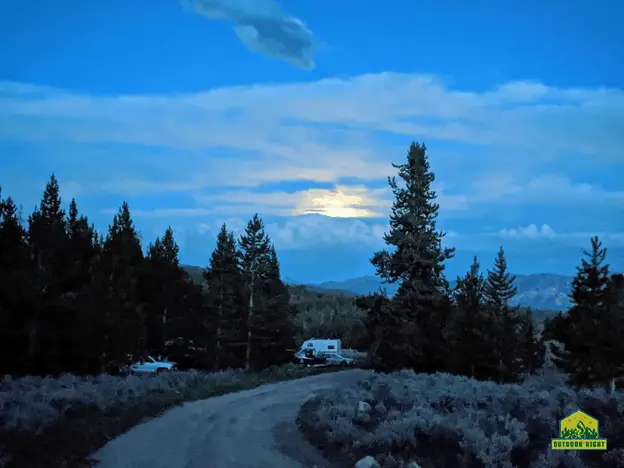
Table & Chairs
What would camping be without comfortable chairs (and a place to put your drink)? Like sleep, a comfortable chair can make or break your camping experience.
The qualities of a great chair are largely based on preference. For example, I’m on the shorter side of the tall-spectrum (5’5” to be exact). Any chair that keeps my feet on the ground gets a 5-star review.
There are hundreds of chairs to choose from and each one is designed a little bit differently, so test out a few before you purchase. If you can’t test a chair, research the dimensions to ensure that it’ll be comfortable for your height and body type.
First Aid
Last, but definitely not least, is first aid. At a minimum you should have a basic first aid kit containing items like bandaids, antibiotics, gauze and basic over-the-counter medications. The longer you’re camping, the more likely it is that you’ll need to use it.
I would also highly encourage everyone to take a basic first aid course that includes training like CPR.
In 2014, I broke my neck on a remote beach in Western Samoa (not to be confused with American Samoa). The first aid skills that my travel partner applied likely saved my life, and my ability to walk and live a normal life today.
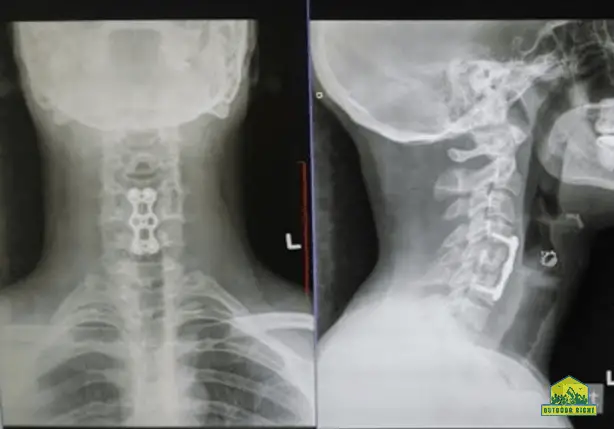
Basic first aid skills are extremely valuable for anyone, and could help save your own life and/or someone else’s.
FAQ
How do I find a long-term camping site?
Do your research and read the fine print!
Make a short-list of 4-5 locations where you’d like to camp. Figure out which locations allow long-term camping, and which ones don’t. Keep narrowing your list until you find the spot that meets your criteria.
I do most of my camping in National Forests, so I always start by searching the Forest Service website for the region that I’m curious about. If I exhaust my search on the web, I’ll call the local district office with my questions and they’re happy to help.
Below are links to the relevant National Forest Service, Bureau of Land Management, and National Parks Service websites.
- Forest Service | Visit Destinations
- Bureau of Land Management | Recreation and Visitor Services
- National Park Service | Where Can I Camp?
How do I wash my clothes while camping long-term?
Some campsites offer laundry services (such as privately owned campgrounds like KOA), but chances are that you won’t have that luxury. Even more so if you’re primitive camping.
There’s a variety of tools available for washing your clothes while camping. The fact is, most are just different flavors of the same dirty soup: water, soap, your clothes, and good old fashion scrubbing.
The one honorable mention is the Scrubba, which is essentially just a dry bag with a drain valve and a built-in washboard. I don’t own one, but I’ve seen them in use and they seem to serve their purpose.
- SAVE TIME AND MONEY: Never pay for a laundry service and again, save your money...
- LIGHTWEIGHT AND PORTABLE: Scrubba wash bag weighs only five ounces and easily...
- EASY TO USE: simply place your dirty laundry, detergent and water inside, Seal...
- LAUNDRY SOLUTION: protect the earth by using less water and detergent than hotel...
If you do end up washing your clothes while camping, there are a few important rules to follow:
- Don’t do your laundry directly in a natural water source (like a lake, river or stream). This is probably the same water you’re drinking.
- Use a biodegradable soap (such as Camp Suds).
- Drain your dirty water at least 200 feet from lakes, rivers, streams, and your campsite.
- OUTDOOR SOAP BRAND: The best pocket soap kit for campers, backpackers, and...
- CONVENIENT AND EFFICIENT: All it takes is just a few drops! Since all you need...
- SAFE AND EFFECTIVE: Our natural ingredients will clean a heavy duty mess on your...
- ENVIRONMENTALLY SOUND: Campsuds is made from all-natural ingredients that...
- LIGHT AND REFRESHING SCENT: Campsuds is created with a blend of essential oils...
What do I do if there’s no toilet?
If you’re camping in an established campground and there’s no toilet, there’s a problem. I’ve never been to an established campground without a toilet, and the repercussions of this would be, well, very noticeable.
On the other hand, if you’re primitive camping there are two options:
- Walk at least 200 feet from your campsite (and any water source). Dig a hole at least six inches deep and four inches wide. Listen to the sounds of nature, then fill in the hole with dirt.
Cover the hole with rocks, sticks, and/or leaves to disguise it from animals (both wild and domestic).
To be safe, mark the hole with an upright stick, a big rock- something obvious to let your fellow campers know you were there.
- Purchase a portable camping toilet and place it at least 200 feet from your campsite (and any water source).
- Portable Travel Toilet: Provides a convenient bathroom spot while on-the-go;...
- Stops Leaks and Odors: The locking lid helps prevents spills and the sealing...
- Easy to Flush: An easy-to-use bellow-type flush and pull slide valve provide...
- Size: Measures 16 7/8-inches (H) x 14-inches (W) x 16 ¼-inches (D); Durable...
- Includes: (1) portable toilet and (3) individual TST Orange Drop-INs
Can I have a campfire while long-term camping?
Yes. Sometimes. Maybe.
Ok, it’s complicated.
The rules around campfires vary greatly between regions, and often change by the hour. This has largely to do with the risk of wildfire on a particular landscape. For example, wildfire is much more prevalent in areas with arid and dry climates like California and Colorado, when compared to areas with humid climates like Vermont and New Hampshire.
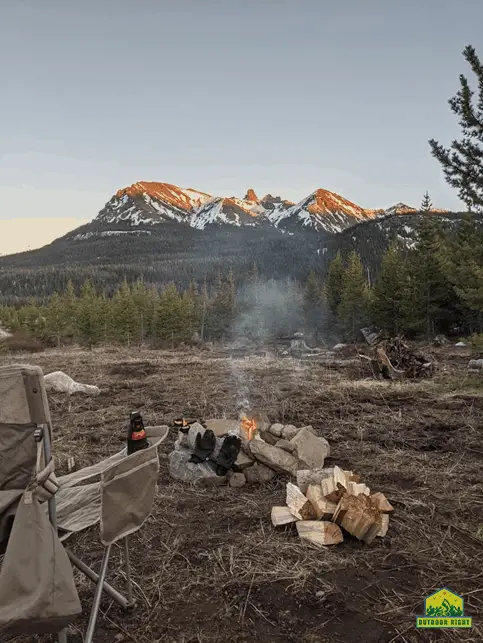
It’s vital that you know the current fire regulations for your region and follow the laws in place.
For example, I live in southwest Montana. At the time of writing this, we are under Stage 1 fire restrictions (due to record breaking drought and heat). This means that any kind of fire or activity that has the potential to start a wildfire is prohibited (until conditions improve). This includes camp stoves, charcoal grills, campfires- even cigarettes (outside of an enclosed vehicle or building) are prohibited.
A year ago in September, I was evacuated and almost lost my home to a lightning caused wildfire. The threat is front and center in my mind. That said, I love a good campfire, and I always have one when it’s safe to do so.
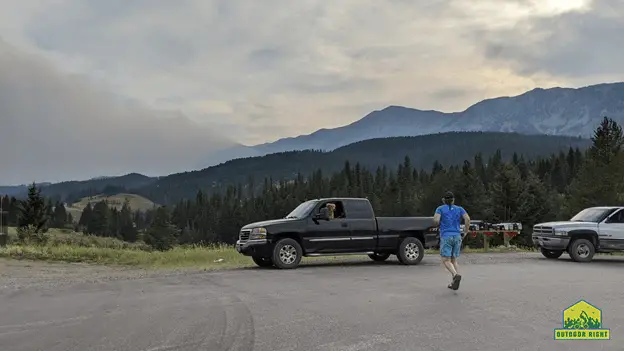
My goal here is not to scare you from having campfires, but to encourage you to do your research and use common sense. The consequences of starting a wildfire are very real, for both the person who started it (even accidentally) and those impacted.
The best place to learn about campfire regulations and fire weather conditions is by contacting the campground or local governing agency for the area where you plan to camp.
Check out these resources for more information about fire weather, conditions, and regulations.
- Bureau of Land Management | Fire Restrictions by State
- National Forest Service | Fire Restriction Information
- Smokey Campfire Safety
Conclusion
Long-term camping provides an approachable way to challenge ourselves, get out of our comfort zone, and have fun in the process.
This guide is based largely from my own experiences. The only way to figure out what’s essential for YOU is from first hand experience. So do your research and start planning your next long-term camping trip!

Alex Mwangi is the creator of Outdoor Right and an outdoor enthusiast. During his free time he enjoys riding his road bike or traveling the world looking for his next adventure.

